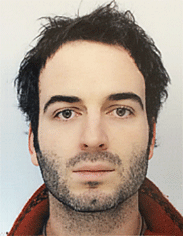Comité éditorial: Dr Sami CORCOS

Affiliations
- Pharmacien d'officine
- 26200 Montélimar - FRANCE
texte
Nous vous recommandons de ne pas fermer votre navigateur lors de vos lectures sur notre site, afin de conserver votre session ouverte sans avoir à saisir une nouvelle fois vos codes d'accès.
Vous avez oublié vos codes d'accès ? Cliquez ici et nous vous les communiquerons de nouveau par e-mail.
Cher confrère, chère consœur,
Vous vous connectez pour la première fois et souhaitez bénéficier du service "AddictoScope" ?
Pour cela, il vous suffit de compléter le formulaire d'adhésion en ligne disponible ci-dessous et de renseigner vos coordonnées professionnelles, sans oublier votre adresse e-mail.
Demande d'accès*